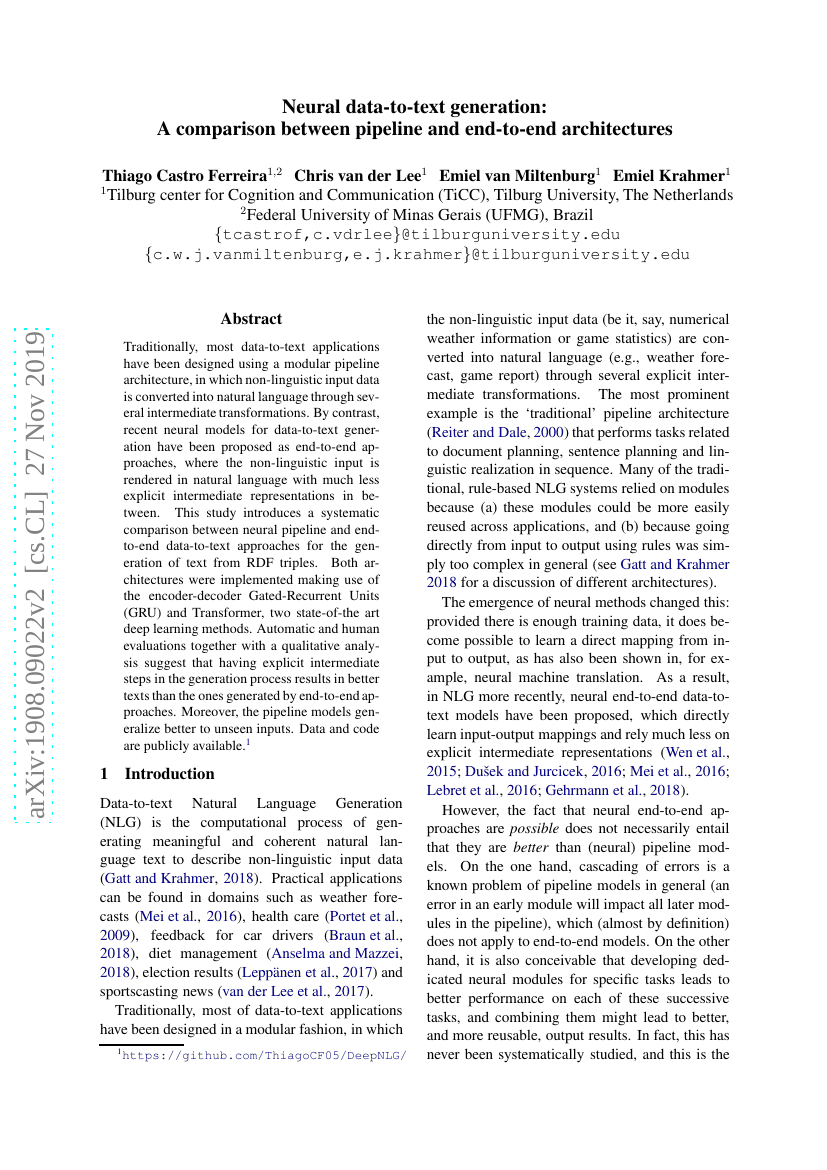Command Palette
Search for a command to run...
Neural data-to-text generation: A comparison between pipeline and end-to-end architectures
Thiago Castro Ferreira; Chris van der Lee; Emiel van Miltenburg; Emiel Krahmer

Abstract
Traditionally, most data-to-text applications have been designed using a modular pipeline architecture, in which non-linguistic input data is converted into natural language through several intermediate transformations. In contrast, recent neural models for data-to-text generation have been proposed as end-to-end approaches, where the non-linguistic input is rendered in natural language with much less explicit intermediate representations in-between. This study introduces a systematic comparison between neural pipeline and end-to-end data-to-text approaches for the generation of text from RDF triples. Both architectures were implemented making use of state-of-the art deep learning methods as the encoder-decoder Gated-Recurrent Units (GRU) and Transformer. Automatic and human evaluations together with a qualitative analysis suggest that having explicit intermediate steps in the generation process results in better texts than the ones generated by end-to-end approaches. Moreover, the pipeline models generalize better to unseen inputs. Data and code are publicly available.
Code Repositories
Benchmarks
| Benchmark | Methodology | Metrics |
|---|---|---|
| data-to-text-generation-on-webnlg | E2E GRU | BLEU: 57.20 |
| data-to-text-generation-on-webnlg-full-1 | Transformer (Pipeline) | BLEU: 51.68 |
Build AI with AI
From idea to launch — accelerate your AI development with free AI co-coding, out-of-the-box environment and best price of GPUs.